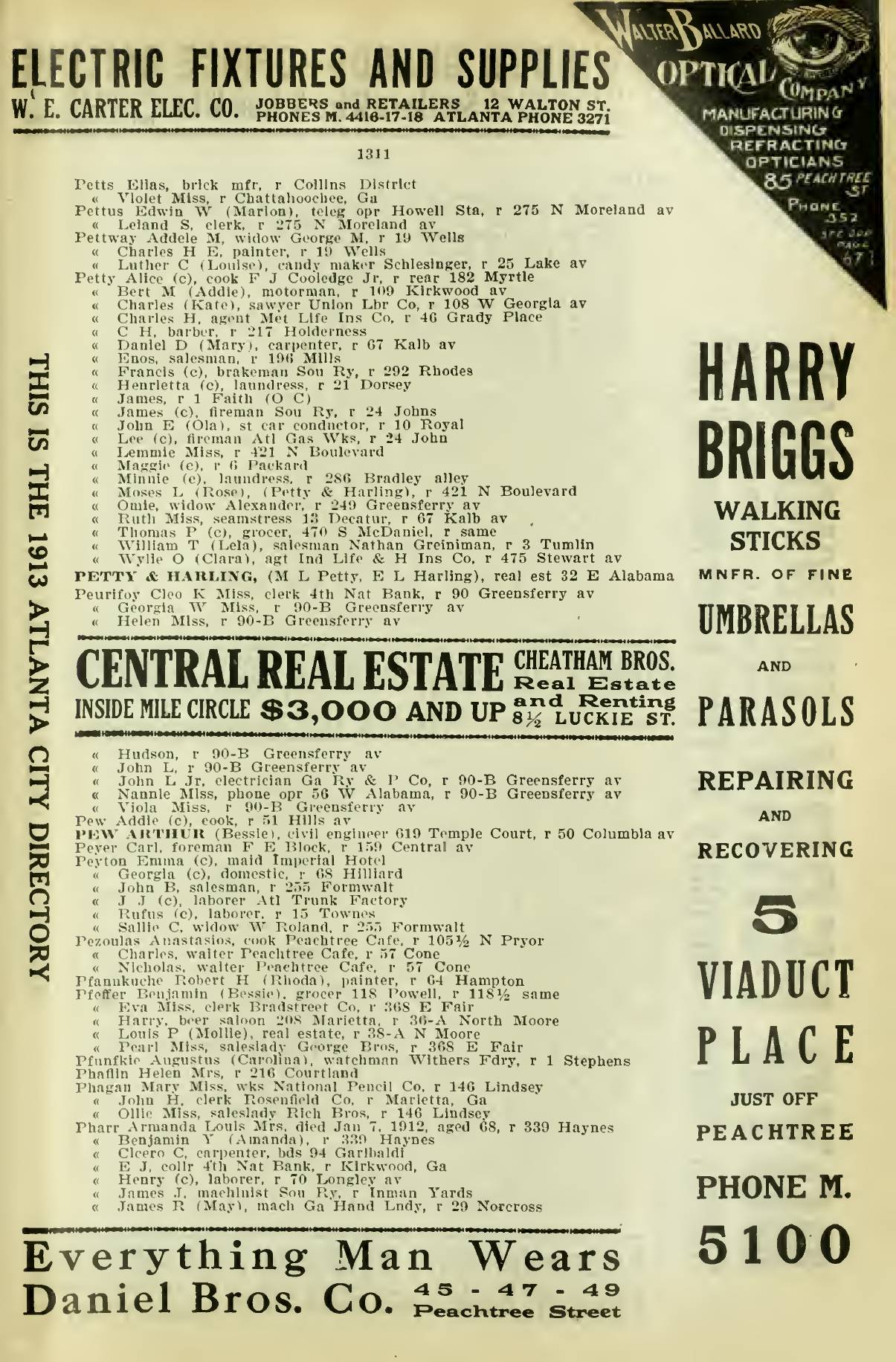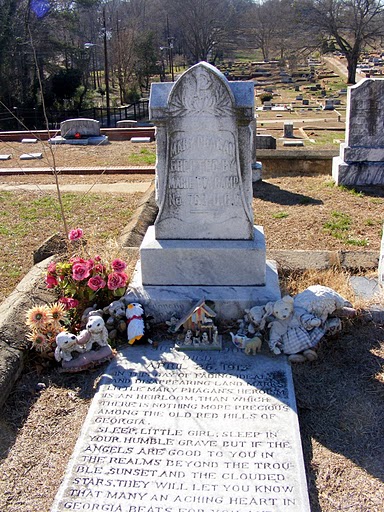Mary Phagan Kean
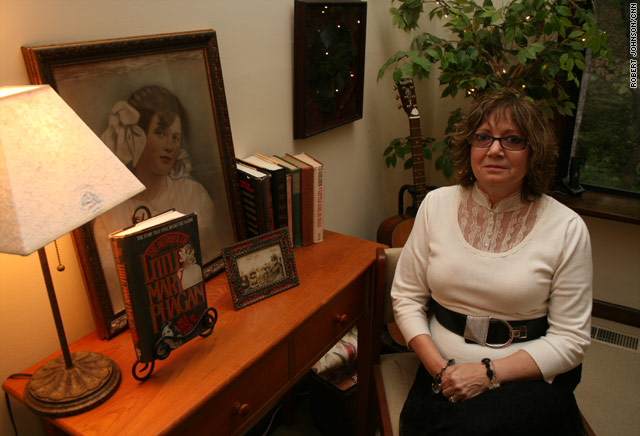
Question: What would Mary Anne Phagan (June 1, 1899 – April 26, 1913) approximately look like in her mid to late fifties if she had lived to see this age? Answer: Mary Phagan-Kean (b. June 5, 1954), her grandniece and namesake.
Mary Phagan-Kean, a self-proclaimed “military brat,” was born in the Southern State of Georgia. Phagan-Kean is one of those rare and insightful historian-scholars, willing to subdue her own natural emotions and biases, to apply the truly dispassionate researchers lens on one of the most incendiary events of early 20th century Southern history. What makes Phagan-Kean’s dedication to neutral historiography even more ironic is the honoring familial relationship to her namesake little Mary Anne Phagan (June 1, 1899 – April 26, 1913). Moreover, despite the complex sectarian tensions of politics, society, classism, regional, religious, and racial undercurrents surrounding the Mary Phagan tragedy, Phagan-Kean has spent nearly her entire lifetime, beginning when she was thirteen years old (1967), fearlessly striving to be open-minded, skeptical, analytical, and applying a critical eye to understanding this case from every perspective in the full spectrum of positions.
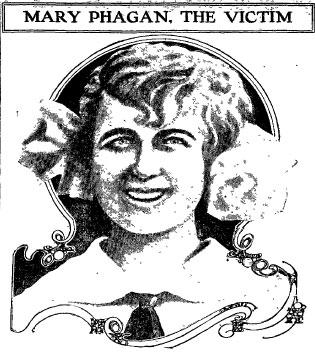
In 1913, after thirteen months of employment at the National Pencil Company — located downtown at 37-41 South Forsyth Street in Atlanta’s industrial sector — little Mary Phagan grew increasingly weary of her lecherous factory boss, superintendent Leo M. Frank, who had developed a lascivious reputation amongst his child laborers that made up the vast majority of the factory’s 170 employees. Frank had taken a liking to little Mary Ann Phagan, increasingly making creepy innuendos toward her by using work-related issues as a ruse for bothersome pesterings and creepy sexual advances, leaving the young girl exasperated, feeling evermore annoyed, but there was no word for sexual harassment in 1913. Phagan tried to politely and subtly spurn her infatuated director with greater frequency and intensity, because the poverty-stricken girl really needed to keep her stable job after all, but it wasn’t enough. It left the libertine degenerate feeling scorned, frustrated, and ever more determined. According to the day watchman E. F. Holloway, the one man that little Mary Phagan freely spoke with on personal level was [the 6’4″ tall, strapping, and handsome] James Milton Gantt, the former paymaster at the factory. From afar, Leo Frank, with bitter contempt in his heart, saw pretty little Mary Phagan gazing deeply into Gantt’s baby blue eyes, like he was her knight in shining armor. Leo Frank had already engineered his own designs, when in early April, Gantt was fired because about a dollar was missing from the petty cash box. Thus, with the handsome prince out of the way, the jealous dragon could play. On Monday afternoon, April 28, 1913, Leo Frank told Pinkerton Detective Harry Scott that Gantt had been intimate with Mary Phagan, causing Gantt to be arrested on suspicion. What was ironic was that Leo Frank told the police on Monday morning, April 28, 1913, he did not know Mary Phagan. So why in the afternoon did he tell his personal Pinkerton Detective that Gantt had been intimate with Mary Phagan? It was many similar incidents like this that turned suspicion against Leo Frank as he became the prime suspect.
A crime of passion that should have been regarded as nothing more than a quickly solved murder mystery and logical conviction to follow, involving the archetype of an ambitious, high-profile, and highly functional serial pedophile — jealously infatuated with one of his own attractive teenage employees who repeatedly spurned him — has instead, by fiat of collective Jewish consciousness, tribal neurosis along with the pathology of persecution against the noble Jewish victim, endemic to the Jewish people, been transformed into another war front in the ongoing millennia-old Jewish-Gentile feud, becoming a century-long culture and genetic race war against the United States of America and all of Western Civilization.
Attempts by individual members and groups among the larger Jewish community, at rehabilitating the historically disgraced reputation of Leo Frank has all the flavorings of “Jewish Cultural Marxism,” with Jews playing the role of aggressive victim-parasites instigating a subversive revolutionary conflict of agitation using deracinating media and theater against the Gentile host’s solidarity, culture, and system of law. Like the HIV virus that causes AIDS destroying the immune system of the host bodies it occupies, Jews are working relentlessly to destroy the immune system of the white Western countries they occupy by smearing the patriots and defenders of Magna Europa, as hate criminals, and buying politicians who will vote for the enactment of thought crime laws with harsh sentences against critics of Jews and Israel. Where the Jews cannot manipulate laws because of protection of the Constitution, they work socially to marginalize patriots as dangerous extremists and domestic terrorists. This is the function of groups like the Anti-Defamation League and Southern Poverty Law Center, who are on the front lines attacking American patriots and destroying the solidarity amongst non-Jews.
The Roman Gambit: Jews Using Gentiles to Do Their Dirty Work
In the years of the Leo Frank case (1913 to 1915), Jews recruited a number of Gentile writers to produce pamphlets, booklets, magazines, and newspaper articles romanticizing Leo Frank as a noble victim and blaming his Negro step-and-fetch-it James “Jim” Conley for the crime. This was done to sustain the narrative by the overwhelming majority of newspapers owned by Jews, waging a Jewish defamation campaign against Georgia, Southerners, white ethnic solidarity, and Southern culture. In the 21st century, we see no end to the campaign of smearing Southerners as convicting Leo Frank because of “anti-Semitism, and not the facts” and with Gentile “media frenzies.”
But with the Internet age maturing and blossoming, the Jewish monopoly over the mainstream media and popular culture is in gradual, but terminal decline, so it’s time to plunge a one inch thick uranium stake into the black heart of Global Jewry once and for all, so this poor little teenage Christian girl can finally rest in peace, without the pom-poms of Jewish pedophile cheerleaders shouting “Rah Rah Leo Frank Rah Rah” over her sacred grave.
Almost exclusively over the last one hundred years, the books romanticizing Leo Frank as a tragic martyr of Gentile culture have been written by Jews. This website intends to put an end to this Jewish hoax by letting everyone know what really happened. This Leo Frank research library is doing something no one else has ever dared to do, for the first time since the dramatic finale of the Leo Frank case on August 17, 1915. We are making the elusive 1,800 page official Georgia Supreme Court Case documents on Leo Frank free to the public. This massive legal file had once been locked away in the vault of the Georgia State Archive since 1913, but now is available for the public to read in unaltered high resolution images. Please set aside the time to read and study the Leo Frank GA Supreme Court Case File available on www.LeoFrank.org, the Leo Frank Research Library and Archive! Since this website is regularly attacked by Jewish hackers, we intend to make this legal record on other online libraries like www.Archive.org, The Internet Archive.
Looking Back on the Leo Frank Case with New Eyes
Phagan-Kean is not only deeply knowledgeable on the subject of the 1913 murder of little Mary Phagan and the complicated Leo Frank epic saga that ensued, but she is also one able and willing to annihilate the ego within herself concerning this contentious subject and apply a dispassionate researcher’s lens on all developments, facts, evidence, exhibits, and testimony pertaining to the case. This includes presenting the case from both sides equally, from the State’s Prosecution team to the Leo M. Frank defense positions.
Steve Oney Frankite Superstar DJ Spinning the Leo Frank Case
Not even the highest Frankite grandee, the Jewish-American tabloid style journalist-author Steve Oney, can truly say his faux-neutral, myopically toady analysis and well-written spin isn’t pretentious, denigrating, mocking, oozing with ego, and shamelessly biased on behalf of Leo Frank. Not to mention, Steve Oney’s book is filled from beginning to end with numerous errors, omissions, and fabrications, many that do not stand up to even minimal examination (see Steve Oney book review).
You Be the Jury: Read Mary Phagan-Kean’s Book
Buy The Murder of Little Mary Phagan by Mary Phagan-Kean on www.Amazon.com. Read it and write a review about it.
What makes Phagan-Kean so special and unusual in regards to being a dispassionate researcher, she is also willing to put all the facts, evidence, and testimony on the table from both sides of the case — in a cogent and impartial manner — in front of the public, open-minded readers, and neutral observers – including diehard Frankites to let people decide for themselves what really happened. In her seminal book The Murder of Little Mary Phagan, she ultimately lets the public make their own independent decisions on what makes sense and what does not, without forcing any opinions on the reader by spinning the case for the prosecution. Nor does she force conclusions on the reader, and she does NOT fabricate evidence like Steve Oney, Leonard Dinnerstein, Harry Golden, Jeffrey Paul Melnick, and Elaine Marie Alphin — fabrications that are easy to check now that the Georgia State Archive has digitally scanned the official Georgia Supreme Court Leo M. Frank case files.
Very few people can claim they have devoted their entire life to the study and research of this tragic and horrifying “double strangulation” murder with a neutral eye. Indeed, the Leo Frank affair is arguably the most famous case in U.S. history, a two-year epic saga rocking the nation and media at the time and still capturing the imagination of the masses more than one hundred years after the trial ended with the conviction and hanging of Leo Frank.
Congratulations to Mary Phagan-Kean for being the only contemporary author writing about the Leo Frank case that can be independently verified to be a fair, impartial, and neutral.
Jewish Tribal Behavior: Blind Loyalty and Self-Deception Even for Pedophilia, Bestiality (see Talmud), Child Rape, and Strangulation
When modern independent scholars look back on one hundred years of the written and cinematic history concerning the Leo Frank case, through the metaphor of “an eagle flying above in the heavens, seeing the whole of the forest, and not just the individual trees,” and compare it against the dry leaves of the official trial and appeals records (1913 to 1915), it reveals a very ugly, malicious, and hidden side of the Jewish community, one most Gentiles are not fully aware exists interwoven in the DNA of Jews, unless one studies the cycles and patterns of Jewish history and social culture. The Leo Frank case is the doorway to understand the disfigured collective consciousness of American Ashkenazi Jewry.
Jewish Criminal Conspiracy
A Jewish criminal conspiracy of tribal trouble making is an integral part of the collective psyche of Jews, expressed and revealed in their evolutionary strategy behavior, as something deeply ingrained in Jewish culture and genetics that transcends time and space. The Internet has brought the truth of Jewish history to light, even though Jews adamantly deny it and have pushed for laws in numerous countries to make it illegal to criticize Jews or their official dogma on history. In Europe, you can go to jail for up to five years for telling the truth about the Jews and their history as an extended international crime family without borders. America is the last bastion of free speech, but for how long, with a powerful Jewish lobby working behind the scenes? How long until it becomes illegal to tell public that Leo Frank made an admission on the witness stand at his trial that amounted to a murder trial incriminating statement?
During and after the Leo Frank trial the Jewish community bared the full extent of its uncompromising treachery, willingness to do criminal activity and perpetuate widespread collective self-deception (denial and blame), showing what lengths individual and groups of Jews were willing to go, on behalf of one of their own tribal kinsmen, regardless if they knew deep down inside that Leo M. Frank was guilty of murder by the preponderance of the testimony, facts, and evidence. Part of being Jewish means being able to deceive themselves against the grain of the evidence and actually believe Leo Frank was innocent, even after he made four separate and distinct alleged (hearsay) confessions and incriminating statements sustained by all the evidence and testimony. One thing that Jews individually and collectively are better at doing than anyone else in the human population is convincing themselves lies are true.
From Jewish Sexual Predator to Jewish Superhero
To make matters worse, for one hundred years the Jewish community has been relentlessly and aggressively attempting to rehabilitate, romanticize, humanize and idealize Leo Frank, attempting to transform this child rapist, whoremonger, serial wife cheater, and violent strangler into a noble martyr and Promethean hero, who was stoic in the face of a collective Gentile conspiracy of anti-Semitism, prejudice, newspaper sensationalism, and race hatred. That Jews would go to such great lengths to transfigure an almost admitted child killer is proof that the Hebrews are incompatible with Western Civilization. Jews should be registered as domestic extremists and a threat to national and international security, with the full might of the U.S. military in their war on terror should be redirected at these domestic cultural terrorists.
The Southerner Perspective: Two Faces of One Case
On one side, the Leo Frank case evolved into an anti-Gentile blood libel and anti-Southern cause celeb for the Jewish community (nationally and internationally), and on the other side, Southerners became incensed with the relentless Jewish media defamation war waged against them and the unrelenting efforts to build national support for emotionally exonerating Leo Frank in the American heart — this is despite vindication of the Georgia Courts by the United States Supreme Court.
Passions over the case were running deep and high on all sides back then, even if some Jews at home in Georgia were quietly nursing their wounds because they weren’t duped by the “anti-Semitism was behind it all.” Southerners interpreted the media circus as a collective Jewish effort to subvert the Constitution and the very fabric of the United States system of justice: due process. Today, Western Civilization is in terminal decline with a Jewish cancer that is working to destroy its traditions and heritage. It’s time for aggressive chemotherapy directed at this disease.
Jewish Cultural Terrorism Coming to Its Crescendo 2013 to 2015
With the double centennials coming into fruition and the Jewish propaganda on the Leo Frank case accelerating at an unprecedented pace, we should expect a firestorm of Jewish manufactured controversy erupting between 2013 and 2015. Sadly, more Frankite media, books, dramatizations, magazine articles, and newspaper articles have come out on behalf of Leo Frank in the decades surrounding the turn of the 21st century than at any time during the last one hundred years after the case ended in 1915. The distortion of the Leo Frank case has a distinct Jewish stench, and it’s time to take this trash away to the landfill of humanity.
One Woman Against the Powerful Jewish Lobby, Community, and Jewsmedia Juggernaut
What makes Kean a stone fortress tower of light and truth surrounded by a sea of darkness, glatt kosher shit storms, and Jewish pathological lies is she has written the most neutral account to date on the April 26, 1913, bludgeoning, rape, and strangulation of Mary Phagan all the way to the subsequent August 17, 1915, lynching of Leo Frank, including the aftermath of this case, up until the highly political ADL-sponsored Leo Frank pardon without exoneration on March 11, 1986. Buy this book today. It’s worth the read.
Mary Phagan-Kean is truly a rare and special woman, one who seems reticent these days and who is regularly smeared by hate-filled Jews in the reviews section concerning her awesome book listed on amazon.com. Go read on Amazon.com and witness the Jews reaching deep into their asses, scraping out glatt kosher human feces and smearing it on Phagan-Kean.
We are asking every person who reads these words to go right now to www.amazon.com, search for The Murder of Little Mary Phagan by Mary Phagan-Kean, and buy a copy of it. Read it, and if you feel it was an honest and worthy attempt, please write a positive review about it on www.amazon.com.
The Leo Frank Case and Jewish Cultural Terrorism
Mary Phagan-Kean wrote a refreshing monograph contrary to the constant onslaught of reengineered and rewritten Jewish regurgitation published and produced over the last one hundred years. Publications by Jewish and Frankites are funded by grants, endowments, tax payer dollars, aggressive members of the growing Cult of Leo Frank (the Frankites), and the tireless collective Jewish hate monger community, which is waging a dirty social campaign that seems to have no end in sight.
The Leo Frank Anti-Semitism Hoax propaganda movement, after one hundred years of aggressive proselytizing, has finally made the Leo Frank martyr mythology appear to be a popular cultural, mainstream orthodoxy (check out Jewish-controlled www.wikipedia.org). Thus it has become another victory for the Jewish political correctness new-speak movement against the United States of America and all of Western Civilization that says any criticism of Jews is tantamount to anti-Semitism. As a result, Frankites who write and publish works on the subject that tow the Jewish party line are rewarded handsomely and get rave reviews in the Jewsmedia, ensuring sales and speaking tours galore, and don’t forget all the write ups in prominent newspapers, magazines, and periodicals. Regardless of how unabashedly dishonest the works spin and deviate from the truth, they are given kudos. The Jews label their pathological lies and rewritten pseudohistory as “creative artistic license” or “literature,” as in the case of the Broadway Theater Musical Parade (see our review of Parade by Brown and Uhry).
The Myth Makers
This popular culture martyr myth making of the Leo Frank pogrom has evolved into a kind of fantastic dogmatic religious orthodoxy that is dramatized into broken record mantras and renditions about supposed racist anti-Jewish bigotry, because most people who produce revisionist works on the subject of Leo Frank and Mary Phagan are almost always Jews or PC goyim, fanatical diehard Leo Frank partisans or born again Frankites, who have utilized the case for a most disgusting purpose, to perpetuate the myth that Jews are innocent bystanders eternally persecuted as victims of unwarranted and uninstigated hate in Gentile societies. However, history shows that Judaism produces the revolutionary animal that is always at war with the civilizations it occupies. Antagonism and instigation of tensions are institutions within the Jewish hierarchy and deeply programmed in the Jewish genetic algorithms.
The International Jewsmedia: AKA Ziomedia
The central Jewish political tenets of the Leo Frank case are successfully force fed on the public through various media machinations, by skillful Frankites, who carefully spin the case with the highest levels of subtle dishonesty, achieved by intentionally leaving out crucial facts, testimony, and evidence that convicts Frank beyond a reasonable doubt. As a result, the Leo Frank case has made it impossible for Jews to hide this grotesque reflection of truth about their collectively unreasonable, treacherous, and perfidious minds always at war with Gentiles and Western Civilization.
The Jewish Smear
Moreover, this odd Jewish cult of personality formed around a pedophile has become such an aggressive cultural weapon that anyone who might suggest Leo Frank was guilty will get smeared and ruined as an anti-Semite by the racist extremist and cultural terrorist Jewish community.
Why You Should Buy and Read This Book
Read this groundbreaking and definitive book, The Murder of Little Mary Phagan, to learn what really happened plain and simple. It also provides insight from the loving and loyal family that had to endure the tragic loss and the ugly criminal politics that ensued by the Leo Frank defense team, then and after the 1915 lynching, now for more than a century by the Jewish Frankites (the fanatical cult of Leo Frank). This book is required reading for anyone who wants the most definitive account about the most sensational murder case of early 20th century America, available on www.Amazon.com.
Twenty-First Century Jewish Lies
Today the strangulation murder of Mary Phagan has been reduced to nothing more than a plot device and catalyst for the glorification of Jewish suffering and persecution, at the hands of Southern pitchfork-wielding Gentiles, as the popular dramatization and Broadway musical Parade is being played out across the country in theater halls since 1998 and international theaters. What the musical is hiding behind its smokescreen of anti-Semitism is the racist anti-black subplot of the Mary Phagan sex murder and that Leo Frank blundered his attempt to railroad and frame his African-American night watchman Newton “Newt” Lee.
The fictionalized docudrama film People v Leo Frank (2009) by Ben Loeterman was featured on PBS and is being played in schools and universities across the country to rewrite history and misrepresent the Leo Frank case using the air of scholarly research. This documentary succeeds in one thing, obfuscating what really happened.
In 2010, Elaine Marie Alphin published An Unspeakable Crime, The Prosecution and Persecution of Leo Frank for high school and college students. The book is easy to read, but is filled with so many misrepresentations of the facts that reviewers on amazon.com have pointed out countless major errors made within its pages. This 2010 racist anti-Gentile and anti-Southern propaganda book on the Leo Frank case represents another misleading Frankite indoctrination and proselytizing attempt by the Jewish community from the Frankite Elaine Marie Alphin, used to poison the minds of high school and college students with lies and historical inaccuracies.
Page 1215 of the Atlanta Directory

Historic Directory Listing for Mary Phagan, 1913, Atlanta, GA
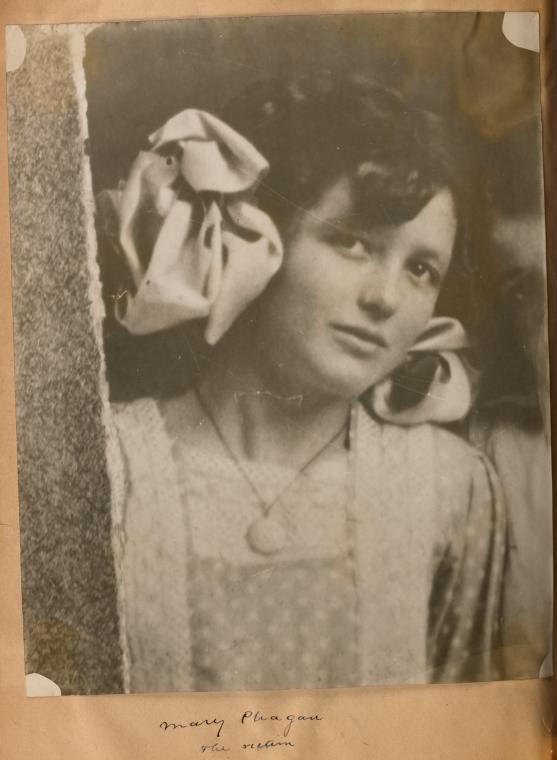
Mary Anne Phagan (June 1, 1899 to April 26, 1913)
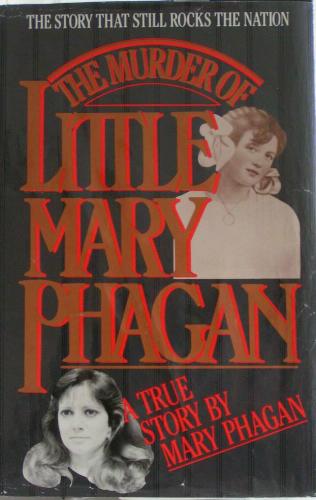
Review from Archive.org
Available in Adobe Acrobat PDF format, download The Murder of Little Mary Phagan from www.Archive.org. Originally published in 1989, by Mary Phagan-Kean, the grandniece of Mary Phagan. One of the most even-handed books written on the Leo Frank case in the last one hundred years and is suggested reading for any student of the Mary Phagan “cold case” mystery. This book is required reading for anyone who wants the most definitive account of the most sensational double murder of 20th century America, available on www.Amazon.com.
Alas, most of the books written on the subject of Mary Phagan and Leo Frank by Frank partisans attempt to spin the case as a vast malicious anti-Jewish conspiracy against the Northern Jew Leo Frank. This rewriting of history is delivered through a complicated cacophony of politically correct and biased racial propaganda, claims of regional and anti-Semitic bigotry, Jewish persecution and victimhood, and Jewish smears directed at those who do not take the pro-Leo Frank position like the State’s Prosecution Solicitor General Hugh Dorsey. All of this is done with excellent Hollywood style production to drown out and confuse the real immense amount of ineluctable evidence supporting the confessed guilt of Leo Frank.
The Truth Is Stronger than the Belligerent Jewish Cacophony
Mary Phagan-Kean is the first person in the last one hundred years to present both sides of the Leo Frank case neutrally. It is a radical change from the predominantly one-sided Jewish Leo Frank cult that has turned the Leo Frank case into an anti-Gentile ugly blood libel. What was nothing more than a cold case murder investigation into the violent beating, pedophile rape, and strangulation of a little white Christian girl has been twisted into a century of pro-Frank cultural “propaganda” by the Jewish community that has spared no expense in directing all its energy on behalf of rehabilitating Leo Frank, transmogrifying him from a psychotic child molester, violent pedophile rapist, sexual predator, prodigious prostitution panderer, and convicted child murderer into a stoic, innocent, and heroic martyr of anti-Jewish prejudice.
Tired of endlessly being endlessly drowned in Jewish propaganda? Read The Murder of Little Mary Phagan by Mary Phagan-Kean. Download The Murder of Little Mary Phagan from www.Archive.org.
Before we provide you with a long-winded review of the book, The Murder of Little Mary Phagan (1989), start with an interesting and brief interview of Mary Phagan-Kean published in the Atlanta Journal-Constitution in January 1999 by Clint Williams. The author of the article, Clint Williams, makes a number of mistakes as most journalists do on the case, but he gets some of the gist of the saga across.
January 6, 1999
Leo Frank killed Mary Phagan, says grand-niece
By Clint Williams, The Atlanta Journal-Constitution
The 1915 lynching of Leo Frank, convicted of murdering 13-year-old Mary Phagan, is the stuff of books, movies and now a Broadway play.
None of them, says Mary Kean, get it right.
“The inaccuracies bother me,” says Kean, who has been a student of the infamous case since she herself was a 13-year-old girl named Mary Phagan after her great-aunt.
The first Mary Phagan was found strangled to death at the National Pencil Factory in Atlanta on April 27, 1913.
Leo Frank, the factory’s manager, was convicted on the testimony of janitor Jim Conley, who said Frank ordered him to hide Mary’s body in the factory basement and plant a note on the body blaming the crime on “a light-skinned [dark-skinned] Negro.”
In August [June 21] 1915, days after his death sentence was commuted to life in prison, a group of about two dozen men from Marietta snatched Frank from the Georgia Work Farm Prison in Milledgeville. Frank was lynched from an oak tree on Frey Gin Road in Marietta.
The musical “Parade,” which opened in New York in December [1998] and is expected to run through April, takes the [false] position of many other retellings of the crime: that Frank was wrongly accused and the victim of virulent anti-Semitism. In most dramatic accounts, the death of Mary Phagan is little more than a plot device that triggers the chain of events leading to the lynching, the focus of “Parade.”
“Mary Phagan was the victim,” says Kean. “He was the murderer.”
That is not any sort of emotional, knee-jerk conclusion, says Kean, who answers her telephone at work, “Mary Phagan Kean.”
“I’m not just the victim’s namesake, I’m a student of the case.”
Over the years, Kean has spent thousands of hours studying original court records and scrolling through microfilm copies of newspapers of the era. Much of her research is found in Kean’s book, “The Murder of Little Mary Phagan,” published in 1988.
The family history that has consumed Kean as an adult was unknown to her as a child. Kean, a self-described “military brat,” grew up knowing nothing about the lynching of Leo Frank and the murder of her great-aunt.
It wasn’t until an eighth-grade history teacher asked her if she was related to the famous Mary Phagan that she learned from her father the story of the girl whose name she carries.
“My father sat me down, we had a glass of milk, and explained it to me,” Kean recalls.
Her father gave a brief account of the murder and lynching and tried to explain the historical significance. The case was famous, Kean’s father said, because it was the first time in the South that a black man’s testimony convicted a white man. The case was cited as the cause for the resurgence of the Ku Klux Klan and the creation of the Anti-Defamation League.
When the family moved to the Atlanta area, Kean says, more people asked about her name. So she began reading all she could about the incident.
“I’d go to rummage sales and look for books about the case,” Kean says.
Her reading sparked her research.
“I wanted to know, I needed to know: Is what they are printing true?”
Much of what has been printed–or put on stage–isn’t true, Kean insists.
The suggestion that Frank was railroaded because he was Jewish is off the mark, she says. There were no bloodthirsty crowds shouting, “Hang the Jew” outside the courthouse, she says.
“I think the way this was covered so heavily in the papers, if that sort of thing had happened it would have been written about,” Kean says.
Pulling out a photocopy of a 1913 Atlanta Constitution story about the trial, Kean reads the headline: ” ‘Good order kept in court by vigilance of deputies.’ Does that sound like what they’re saying today?”
Modern tellings also suggest that class conflict had a role in the lynching of Leo Frank. Poor Southerners working in factories resented their rich Northern bosses. The implication, Kean says, is that Mary Phagan was poor white trash.
The Phagan family was middle-class, Kean says. Mary’s stepfather was a cabinetmaker and her grandfather a wealthy Marietta businessman.
When the family moved from Marietta to East Point, Mary Phagan couldn’t get a desk at her new school, Kean explains, so Mary was working at the pencil factory until the start of the next school year.
Kean again reads from a 1913 newspaper article.
“From her looks,” a story about the testimony of Mary Phagan’s mother states, “the Phagan family is above the station in life from which come children who toil in factories.”
Perhaps most galling to Kean is the contention that Frank was wrongly convicted.
There is ample evidence in the court records to prove Frank was the killer, she says. Frank was caught in contradictions during the coroner’s inquest, Kean notes, and he refused to be cross-examined by the defense.
Kean also offers what could be called linguistic evidence. The note left with the body must have been dictated by Frank, she says. The use of the word “Negro” indicates a Northerner is the author, she says. A Southerner would use the word “colored.”
The 1986 pardon of Frank cited by his modern-day defenders, Kean says, was granted without attempting to address guilt or innocence.
“I think that the truth isn’t really told about Leo Frank,” says Kean. “He is not a martyr, he is a murderer.”
But that doesn’t mean the lynching was justified, Kean says.
“I think it’s a very horrible thing that happened to Leo Frank,” she says.
Convinced Frank is the killer, the only mystery for Kean in the Mary Phagan case is who is putting a red silk rose on the dead girl’s grave.
Over the last several months, every week or so, a single red rose appears on the grave. About a dozen are now planted there.
“That is so sweet,” Kean says. “It means so much to my family.”
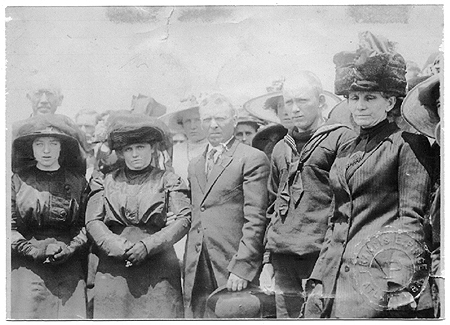
Some of the members of the Phagan family at the funeral of Mary Phagan one Tuesday, April 29, 1913.
Left to Right: Ollie Mae Phagan, Frances Phagan Coleman, J. W. Coleman, Ben Phagan, Lizzie Marietta Durham
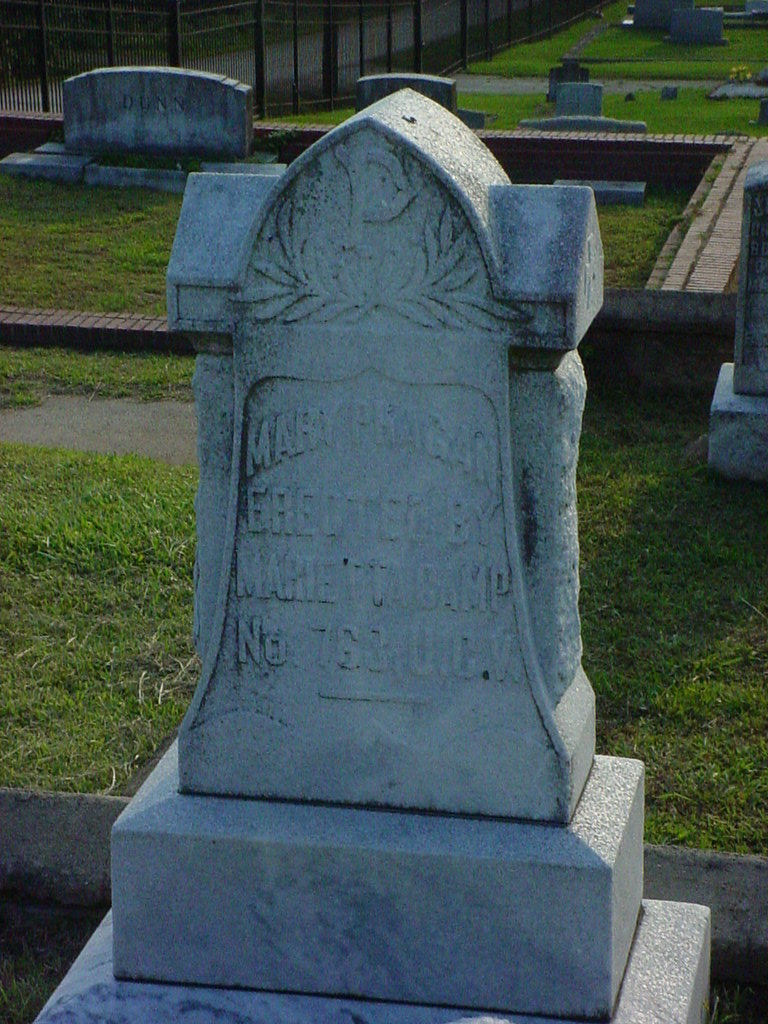
The Tombstone of Mary Phagan (left)
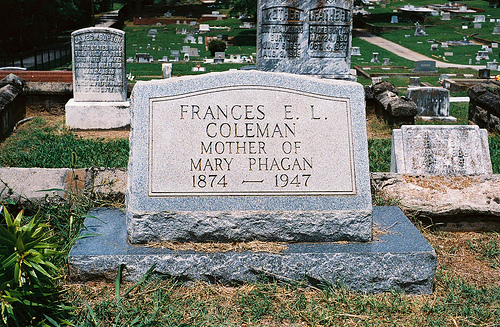
The Tombstone of Mary Phagan’s Mother (right)
2011 Book Review of The Murder of Little Mary Phagan by Mary Phagan-Kean
The book, The Murder of Little Mary Phagan by Mary Phagan-Kean (the great grandniece of Mary Phagan), is probably the most even-handed book written about the 1913 subject and its aftermath. The Murder of Little Mary Phagan details the most infamously contentious and nationally covered early 20th century rape and strangulation cold case investigation, including the trial that led to the August 25, 1913, murder conviction of Leo Max Frank. The book also covers Leo Frank’s subsequent post-conviction appeals 1913 to 1915, the disqualification of Governor of Georgia, John M. Slaton from commuting Leo Frank’s sentence in June 21, 1915, leading to the crescendo of the whole ordeal with the August 17, 1915, lynching, followed by Frank’s highly Jewish racist and political posthumous pardon without exoneration in 1986 (forgiveness, but the guilt was not overturned, preserving the verdict of the jury).
Ironically and not obvious, the 1915 commutation and 1986 pardon affirmed the guilt of Leo Frank as part of a long series of legal review and rulings that all preserved the guilty verdict of the jury.
Who Was Leo Frank?
Leo Frank was born in Cuero, Texas, April 17, 1884. His family moved three months after his birth to Brooklyn, NY, where Frank was raised and educated before going to college upstate in Ithaca. Frank matriculated into Ivy League Cornell University as an engineering student in 1902, and after graduating in 1906, he worked for about a year’s time. A career opportunity was presented to him during a trip to Atlanta, and for it he traveled to Germany in late 1907 with the intention of diligently studying pencil manufacturing during a nine-month apprenticeship. On completion of a pencil manufacturing training, Leo Frank moved to Georgia in August 1908, starting a new life in the South. From the start of his new career working for the National Pencil Company in Atlanta, Frank evolved upward briskly, becoming superintendent, accountant, manager, and some would say later in his career part owner. The factory was located right in the heart of Atlanta, GA, at 37 to 41 South Forsyth Street, and Leo Frank was the highest paid employee working on the ground at $150 a month.
During Leo Frank’s five years of tenure (1908 to 1913) at the National Pencil company, in 1910, Leo Frank married into a wealthy, prominent, and established Jewish Selig-Cohen family who it has been said enabled the creation of the first synagogue in Atlanta.
Who Was Mary Phagan?
Thirteen-year-old Mary Phagan (1899 to 1913), an employee of Leo Frank, had begun working at the pencil factory sometime in spring of 1912, about 50+ weeks. She worked just down the hall from Leo Frank on the second floor. Phagan worked in the metal room, in a section called the tipping department. Her job was inserting erasers into the empty brass metal band tips that were attached to the pencils in final manufacturing production stages. Mary Phagan worked fifty-five hours a week for a salary of $4.05 (Koenigsberg, 2011) or little more than seven cents an hour.
On Confederate Memorial Day, Saturday, April 26, 1913 at noon, Mary Phagan walked into the factory to collect her pay. She had been laid off because the supplies of metal had been depleted, and she was never again seen alive after Leo Frank claimed he gave her a pay envelope.
Failed Clean-up Job
The metal department, where Mary Phagan worked contained the only bathroom on the second floor, near where her blood and hair would be found by early bird employees on Monday morning at 7 a.m. on April 28, 1913. By then, the word that Mary Phagan had been killed spread like wildfire.
A white powder haskolene was discovered suspiciously smeared and rubbed into fresh bloodstains on the floor in the metal room in front of the girls’ dressing room. The five-inch bloodstain had turned into a dusty pinkish red as it bled through the white powder haskolene. Thus, it was immediately determined the “clean-up job” appeared to be a failed attempt to cover up the bloodstains near where the murder victim was accidentally dropped as she was being moved from the metal room to the factory basement two floors below by Jim Conley, the “step-and-fetch-it” and roustabout of Leo Frank.
Little Mary Phagan’s Life
The labor Mary Phagan did at the pencil factory spring of 1912 to April 26, 1913 was her small way of helping support her five siblings and previously widowed mother, who remarried to a man named John Coleman in 1912. Mary’s stepfather knew Mary for four years and identified the hair found on the lathe machine in the metal room as Mary’s (see: Affidavits in the Leo Frank Georgia Supreme Court Archive).
The week before Mary Phagan’s murder, a shortage of metal supplies at the factory had led to a reduction in her work hours, and she was temporarily laid off. Her wages, which were normally about $4.05, for the shortened workweek came to $1.20 for the hours she had worked prior to her being laid off.
On April 26, 1913, celebrated locally as Memorial Day (Confederate Memorial Day), Mary stopped off at the factory before meeting up at the parade with her friends, along with neighbor and co-worker George W. Epps at the designated location of Elkins Watson at 2 p.m. Later in the evening, Epps ran over to Mary Phagan’s home, which was right around the corner from him, to find out why Phagan never showed up at their designated time. Mary Phagan’s family was already in a state of distress over the fact of her being unaccounted for, but they also thought she might have gone to stay with relatives. Mr. Coleman, Mary Phagan’s stepfather, had looked for her at the Bijou Theatre that evening and found the handsome Mr. Darley, foreman at the factory, who was married. He was not with his wife, but with one of the girls who worked at the factory. Why he was squiring around a girl at the factory there tended to reveal a lot about the culture at the factory.
Noon, April 26, 1913
When Mary arrived at the factory at 12:02 to 12:03, Mary’s pay was allegedly issued to her by Leo Frank according to his pre-trial investigation statements. Leo Frank admitted to being the last person to see Mary Phagan alive in a virtually empty factory, as there were four people in the factory at the time she arrived on the state holiday, when the normal number during the business week was more than one hundred. Immediately after receiving her pay, Mary asked Leo Frank if the metal had arrived in the metal room.
There was conflicting testimony about what Leo Frank said concerning a question Mary Phagan asked him, “Has the metal come in?” A Pinkerton detective and defense witness hired by the National Pencil Company contradicted Leo Frank about the answer Leo Frank had said to Mary after she had given the question. According to the Pinkerton Superintendent, Leo Frank allegedly responded, “I don’t know,” which possibly created a scenario with a “let’s find out.” It was very incriminating because murder evidence including a fresh bloodstain and hair were found in the metal room.
April 27, 1913
In the early hours of Sunday, April 27, 1913, at around 3:17 a.m., the night watch (“night witch”) Newt Lee made a phone call to the police. Newt Lee found Mary Phagan’s mangled body on a dirt mound near a furnace in the rear of the basement, with part of her bloody petticoat wrapped around her head. Police reported there was evidence she had been dragged from the elevator face down by the arms, before being dumped next to the furnace. Phagan’s face was scratched up and covered with filth as if someone was trying to make it seem like she had been killed in the basement. The autopsy would reveal that her attacker hit her on the face around the eye with a fist. There was also damage to the back of her head that was likely caused when the occipital region of her skull hit the handle of the lathe (where her hair was found). Her underwear had been torn open and was bloody, and she had apparently been raped, beaten, and eventually strangled with a seven-foot packing cord. One doctor testified under oath to several types of specific rape-violence, vaginal inflammation and torn flesh damage, suggesting some kind of penetration either penile, finger, or other.
The police after viewing the body of Mary Phagan in the factory cellar made several phone calls to Leo Frank, but were unable to reach him. The police were successful when they tried to get in touch with other people who worked at the factory. In the early morning, they finally got Leo Frank on the phone and went directly to his home at around 7 a.m. The detectives arrived at his home, asking Mrs. Frank to speak with Mr. Frank, asking him to accompany them to the factory. Like typical seasoned detectives, without telling Leo Frank what it was about, they observed him, and suspicion fell on Frank because he appeared to be extremely nervous, trembling, rubbing his hands, pale, and appeared to be hung over, bumbling, and agitated. Leo Frank also gave overly detailed and meticulous answers on minor points, his voice was hoarse, and he fumbled and struggled with minor tasks like fixing his shirt and collar.
Delay Going to the Factory
Moreover, Leo kept saying he hadn’t had breakfast and kept asking for a cup of coffee, trying to delay going to the factory even though it was an unknown emergency. Once in the Model T Ford police car, the police asked Leo Frank if he had known who Mary Phagan was and he denied knowing a Mary Phagan, saying he would need to check the accounting books he managed to be sure. This would become an important point at the trial because Mary Phagan had worked for a year on the same floor as Leo Frank and her workstation was only a few feet away from the door where Frank would go to use the bathroom each day. Leo Frank had to pass directly by her to get to the bathroom. Other employees testified Frank knew Mary on a first name basis and got a little too close for comfort at times and he had been seen putting his hand on her shoulder. Phagan had also collected more than fifty pay envelopes from Leo Frank during her one year of employment and logged more than 2,500 hours of work on the time clock inside Leo Frank’s office in front of where he worked.
Leo Frank had been caught in a lie about not knowing Mary Phagan, which damaged his credibility and left people wondering why he was trying to pretend not to know her when he often flirted with her.
James Conley
After arresting and questioning the black sweeper Jim Conley, who was present at work for 2/3 of the day on the infamous Saturday, April 26, 1913, the police eventually, after weeks of the third degree and three half-truth affidavits, convinced Jim Conley to sign a sworn affidavit admitting he was an accomplice after the fact to the murder of Mary Phagan. Conley admitted Leo Frank asked him to move the body of Mary Phagan to the basement and that he wrote four dictated “death notes” at the behest of Leo Frank. Only two were discovered scattered next to the head of Mary Phagan in the cellar when they found her next to the furnace.
The Murder Notes
The murder notes were contrived and attempted to make it appear as if Mary Phagan had written the notes after she went to the bathroom and was assaulted there by the night watchman. The notes were clear in their attempt to pin the crime and point guilt to the “long tall slim negro” night watchman Newt Lee (“night witch”) because they described him accurately. And they left many people asking themselves when has a black man committed a murder and stuck around to write murder notes as if they came from the victim addressed to her mother describing the alleged predator-perpetrator.
The trial would make history, because it would be the first time in the United States of America that the testimony of two black men, Jim Conley and Newt Lee, along with affidavit by Leo Frank (State’s Exhibit B, 1913), an affidavit by a black mammy cook named Minola McKnight (State’s Exhibit J) would be a part of a case leading to the conviction and death sentence of a white man (Leo Frank) by an all-white jury in the racially segregated South (where Negroes were second-class citizens).
George Epps, The Newsie, April 26, 1913
Mary Phagan was a no-show at 2 p.m. on April 26, 1913, for her meeting with George Epps, a friend and neighbor. George Epps provided troubling testimony to the police early in the investigation on Monday, April 28, 1913, stating that Mary had told him in confidence that Leo Frank scared her and often made lascivious, inappropriate sexual innuendos and subtle sexual insinuations toward her. Later after the trial, Leo Frank defense team cronies kidnapped George Epps and took him to Alabama. There Epps was threatened with trickery and violence and was forced against his will to recant his testimony against Leo Frank by signing a false affidavit under duress. Epps later confessed that thugs working for the Leo Frank defense fund abducted him and forced him under threat of physical harm to sign an affidavit specifically renouncing the testimony he gave to the police about Leo Frank intimidating Mary Phagan.
Who Was the REAL Star Witness?
The star witness was neither Newt Lee nor Jim Conley, but a fourteen-year-old white girl named Monteen Stover who cracked Leo Frank’s alibi wide open. Monteen Stover had come to the factory at 12:05 and waited until 12:10 to collect her pay envelope (minutes after Mary Phagan had arrived), but Frank was not in either his inner or outer office and was not aware that Monteen Stover had arrived and waited for him five minutes in the place he swore he never left (his second-floor office). Leo Frank testified to police he was in his office every minute from noon to 12:35 p.m. (when Mrs. White arrived at 12:35 and startled him). Leo Frank also told the coroner’s inquest jury that he did not use the bathroom at all that day on April 26, 1913, but at his murder trial, he confessed he went to the bathroom more than once. The importance of this contradictory statement was that the only bathroom on the second floor was in the metal room, where Mary Phagan had been killed.
Leo Frank Incriminating Statements, August 18, 1913
On August 18, 1913, Leo Frank would counter the testimony of Monteen Stover (that Frank was not in his office from 12:05 to 12:10) by stating, she might not have seen him either because the safe door was open and blocked her vision of him or he might have “unconsciously” gone to the bathroom during that time (12:05 to 12:10) in the metal room. He had entrapped himself beyond escape, because the only bathroom on the second floor (State’s Exhibit A) was located inside the metal room, where the prosecution had built a case that Leo Frank had murdered Mary Phagan. It was a shocking revelation by Leo Frank.
Frivolous Appeals
Numerous frivolous appeal attempts by the Leo Frank legal defense team to the Georgia Supreme Court, District Court, and United States Supreme Court were denied after careful review, with lengthy judgments written and rendered. The departing Governor of Georgia, John M. Slaton (who also happened to be a senior legal partner and owner in the same law firm that represented Leo Frank), decided to commute the hanging death sentence of his client, Leo Frank, to life in prison on June 21, 1915. This happened just days before the end of his last term as governor, and the conflict of interest infuriated the public.
The Fire Storm
The “anti-Semite” Tom Watson, through his popular Jeffersonian Publishing Company, called Frank a sodomite and wrote five separate scathing reviews of the Leo Frank case in the January, March, August, September, and October 1915 issues of Watson’s Magazine (see Archive.org to read them all).
July 17, 1915
One month after the commutation of Leo Frank, he was shanked. Leo Frank had his neck slashed in prison by an inmate named Greene, who used a seven-inch butcher knife to sever his jugular vein. Leo Frank barely survived the wound thanks to two inmate doctors, and the slashing was slow to heal in the hot humid Milledgeville summer of 1915.
August 16 and 17, 1915
Almost two months later, after Leo Frank received clemency, a reduction of his death sentence to life in prison, a well-organized group of about twenty-five to thirty-five men — many of which were from Georgia’s highest strata of politics, law, and wealth — organized themselves into the Knights of Mary Phagan. This newly formed group of Georgia’s elite sought to fulfill the death sentence verdict of the jury and deliver righteous retribution in the form of “Southern Style Vigilante Justice.”
After careful planning, these men kidnapped Leo Frank from the minimum-security prison where he was housed, drove all through the night, and then lynched him in the early hours of August 17, 1915, from an oak tree near the town where Mary Phagan had formerly lived.
Leo Frank’s dangling body became a morbid public spectacle. Photographs were taken, and the pictures of Frank’s suspended body gently twirling in the breeze became popular justice postcards and victory memorabilia in the South, selling out almost instantly.
The Murder of Little Mary Phagan
The book The Murder of Little Mary Phagan is written by the namesake of the murder victim, Mary Phagan’s great grandniece named Mary Phagan-Kean. When Mary Phagan-Kean was a teenager, she discovered her given name was no mere coincidence. When people heard Mary Phagan-Kean’s name, they started asking her questions about whether she was related to the famous Mary Phagan who had been murdered long ago by Leo Frank in 1913. Mary Phagan-Kean would learn a startling secret when she asked her family if she was a blood relative connected to the Mary Phagan who was murdered in 1913. When her family revealed the truth about her blood relation, Mary Phagan (Kean) immediately became insatiably curious about the investigation, trial, and aftermath. Instantly becoming a lifelong student of the case, Mary Phagan-Kean devoted the rest her life and still to this day pours over the painstakingly vast archives of the case, reviewing every surviving documents surrounding the case, concerning the torture, rape, and strangulation of her great grand aunt, thirteen-year-old Mary Anne Phagan.
The ADL of B’nai B’rith
Leo Frank was the president of the five hundred-member B’nai B’rith chapter in Atlanta, Georgia. As a result of the conviction and aftermath in this national scandal and sensational trial, it would become the critical mass of “anti-Semitism” catalyzing the formation of two American groups: the treacherous and Jewish espionage agency known as the Anti-Defamation League of B’nai B’rith in October 1913 or ADL of B’nai B’rith (www.adl.org) for short, and spark the revival of the immune system of Western civilization, the defunct nativist and white ethnic nationalist Ku Klux Klan (KKK) on Thanksgiving, 1915.
The Loud Mouths Slander
Jewish scholars who overwhelmingly wrote the lion’s share of all the written books, articles, websites, scripts, and texts about the subject almost unanimously allege the investigation, trial, and conviction where part of a widespread bigoted anti-Semitic conspiracy, a textbook case of railroading and framing an innocent Jewish man because of anti-Jewish racism and religious hatred. These books often leave out thousands of pages of the relevant facts to the case and trial showing Leo Frank’s guilt and then instead spin the facts to creating doubt.
Pardon without Exoneration
Pressure from the Jewish community and espionage spy agency ADL (Anti-Defamation League of B’nai B’rith) with an affidavit from a lonely and senile octogenarian who had died, the former office boy of Frank for three weeks in 1913, a man named Alonzo Mann, resulted in the highly political 1986 Georgian pardon of Leo Frank (without exoneration). They forgave Leo Frank of the crime, but kept his guilt intact and did not disturb the verdict of the jury.
On March 11, 1986, a Pardon without Exoneration Was Issued by the Board
Without attempting to address the question of guilt or innocence, and in recognition of the State’s failure to protect the person of Leo M. Frank and thereby preserve his opportunity for continued legal appeal of his conviction, and in recognition of the State’s failure to bring his killers to justice, and as an effort to heal old wounds, the State Board of Pardons and Paroles, in compliance with its Constitutional and statutory authority, hereby grants to Leo M. Frank a Pardon.
Jewish Dramatizations
A number of fictionalized media dramatizations have been made about the trial in the form of plays, musicals, miniseries, and docudramas all created by Jews making a mockery of the life of Mary Phagan, idealizing and rehabilitating Leo Frank as an innocent victim of evil anti-Semitism. The blood libel against the Leo Frank prosecution and European-Americans continues to this day by the Jewish community, though it is often couched and not always so open and loud as the unscrupulous smears and accusations coming from Frankite authors like Leonard Dinnerstein and Elaine Marie Alphin.
Let’s Not Forget the Incriminating Statement Made by Leo Frank
The Jewish community won’t dare ever mention the “unconscious” bathroom incriminating statement Leo Frank made on the witness stand when he was giving his statement at the trial on August 18, 1913, to counter Monteen Stover’s testimony that he wasn’t in his office.
About the Book
The 4.7 MB adobe PDF version of the book is available on archive.org for download. Please download this book and read it.
The book was published in English on September 25, 1989.
References and Further Reading
Available in Adobe PDF format, download The Murder of Little Mary Phagan, published in 1987, by Mary Phagan-Kean, the great grandniece of Mary Phagan. The only book on the Leo Frank case that is fair and balanced.
Available for review and download, please visit Official George State Supreme Court Legal Files on the Leo Frank Case (volumes 1 and 2) high resolution images.
Internet Archive copy of Leo M. Frank, Plaintiff in Error, vs. State of Georgia, Defendant in Error. In Error from Fulton Superior Court at the July Term 1913. Brief of Evidence 1913
The Ballad of Little Mary Phagan
Images
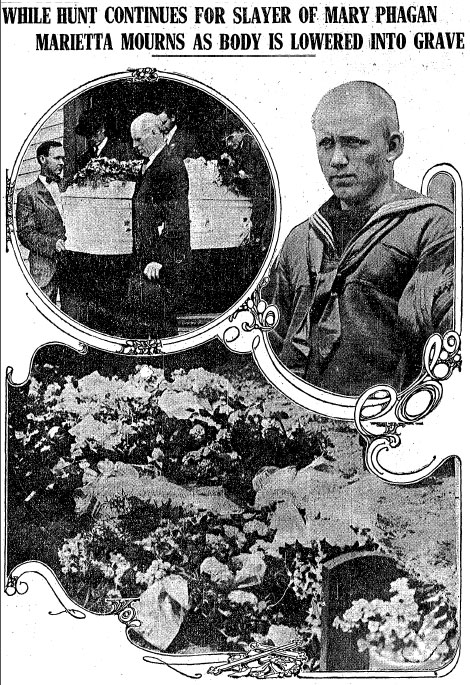

Song: The Grave of Little Mary Phagan
Other Reading
April 30, 1913, Atlanta Constitution
Georgia Supreme Court Case Files: https://www.leofrank.org/images/georgia-supreme-court-case-files/
See: Library of Congress Chronicling America “Leo Frank” newspaper search 1900 to 1922
Tom Watson’s The Jeffersonian newspaper, Images (80% complete), 1914, 1915, 1916, and 1917: https://www.leofrank.org/images/jeffersonian/
The Tom E. Watson Digital Papers Archive (recommended) at the University of North Carolina at Chapel Hill: http://www.lib.unc.edu/dc/watson/
‘The Murder of Little Mary Phagan’ by Mary Phagan Kean (1987) Rebooted into audiobook 2015 by Margaret Huffstickler
Listen to each chapter: https://archive.org/details/TheMurderOfLittleMaryPhaganByMaryPhaganKean1987
